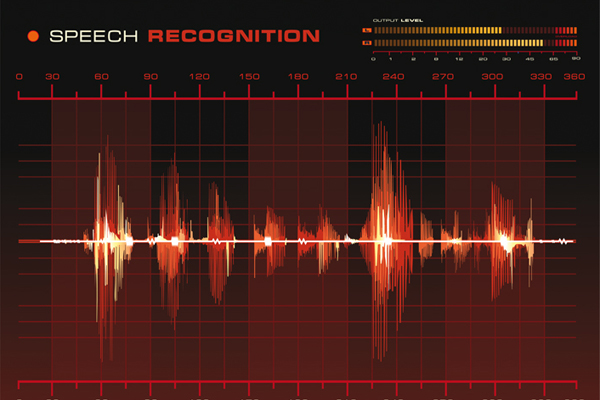Game theory hosted on the radio: how to choose communication frequencies

In the absence of any agreement between the participants in the discussion regarding the distribution of this valuable resource, so that each person will be the speaker for a limited period of time, many of the things said will not be able to be absorbed. Such an agreement can be created by a single authority managing the discussion or by rules accepted by all participants.
Even if we accept the cynical assumption that each participant in the discussion has only one goal - the desire for his words to be heard as much of the time as possible - this goal can only be achieved if the other participants cooperate and allow him to be the only speaker for part of the time. In return, it is assumed that those participants will expect that they too will have the opportunity to speak without interruption.
Prof. Amir Leshem, head of the signal processing track at the Bar-Ilan University School of Engineering, with Prof. Efi Zahavi, head of the communication track, examine the problem from an unconventional point of view: the use of game theory. In this view, communication is a game. Each speaker is an actor who seeks to express his words at the highest rate and with minimum interference from the other speakers.
The focus of the research is competition for another type of communication: electromagnetic waves used for wireless communication. As between human speakers, in this area too there is a danger of interference. The modern world is flooded with electromagnetic transmissions of many types, including radio, television (nowadays, mainly satellite), cell phones, walkie-talkies, wireless computer networks and wireless home phones.
The multiplicity of transmissions creates a great potential for mutual interference - transmissions from different sources on the same frequencies reduce the reception quality of each of the sources. For some of the uses, the effort to prevent interference is expressed by relying on a regulatory authority, for example the granting of government licenses that express the exclusive allocation of frequency domains to entities broadcasting on these frequencies. Without such an allocation and its strict enforcement there is a real danger of interference, such as when pirate radio stations disrupt vital communications between control towers at airports and between aircraft.
In other uses, the transmission frequency is open to any transmitter without the intervention of any authority. This is, for example, the situation with wireless computer networks that any person may install in his home or office. In the most accepted standard for such networks (IEEE 802.11), each "access station" in such a network selects one frequency channel from 13 allowed channels (11 channels in the USA, 13 in most of Europe, 14 in Japan), all of which are between the frequencies of 2.4 and 2.45 C Gigahertz (GHz). There is a large overlap between the channels: for example: channel 6 is the frequency range of 2.426-2.448 GHz, and channel 7 is 2.431-2.453 GHz - an overlap along about 77% of the width of each channel.
In fact, to find two channels that have no overlap between them, five channels must be "jumped", so that if one access station uses channel 6, there will be no interference only if another access station selects channel 1 or channel 11. This design is not as strange as it may seem. , since it is also possible to receive stations transmitting together on overlapping channels as long as the mutual interference is not excessively strong.
In the same frequency ranges used by wireless computer networks, wireless phones, remote control transmitters for car locking systems, devices that transmit using the Bluetooth standard (such as wireless cell phone headsets) and even microwave ovens that are not insulated enough also transmit. Nevertheless, the problem of interference is not as serious as it may appear from these data, because the transmission range of this type of networks is measured in tens of meters in open spaces (the range decreases inside buildings), and other transmitters in this area have a similar range (wireless phones) or lower (Bluetooth, signs for cars).
Therefore, although in urban areas it is likely that several networks can be received in each apartment (it is not uncommon to find more than ten), most of them are far enough away to constitute a relatively minor disturbance. Therefore, there is usually no need for negotiations between neighbors to decide who will use which channel. Despite this, it is likely that wireless communication networks in an urban environment suffer from a certain slowdown due to the heavy load on the frequency ranges they use. This damage will increase as networks become more widespread, as more devices are connected to wireless communication, and as technology advances to faster data transmission (and therefore more susceptible to interference).
The full article was published in Galileo magazine, March 2010

2 תגובות
Good, but there were numbers, graphs and long sentences.
What did they tell us in this article? Nothing. There is no connection between participants in the discussion who all share one audio channel and then each has to speak alone in turn, and dividing radio frequencies into different broadcasts without mutual interference between them. It is not enough to assign each transmission a separate frequency; Mutual interference between different and even distant channels should also be taken into account. And channel distribution planning takes this into account - not a word about it in the article. So we are told that transmissions on the same frequency interfere with each other - this is trivial. A considerable section is devoted to telling us that the distribution of WiFi channels overlaps and the problems it may cause - but that's how it's designed.
And most importantly - they promise to tell us how game theory is mobilized for channel resource planning - which is actually the subject of the article - and they don't say a single word about it.